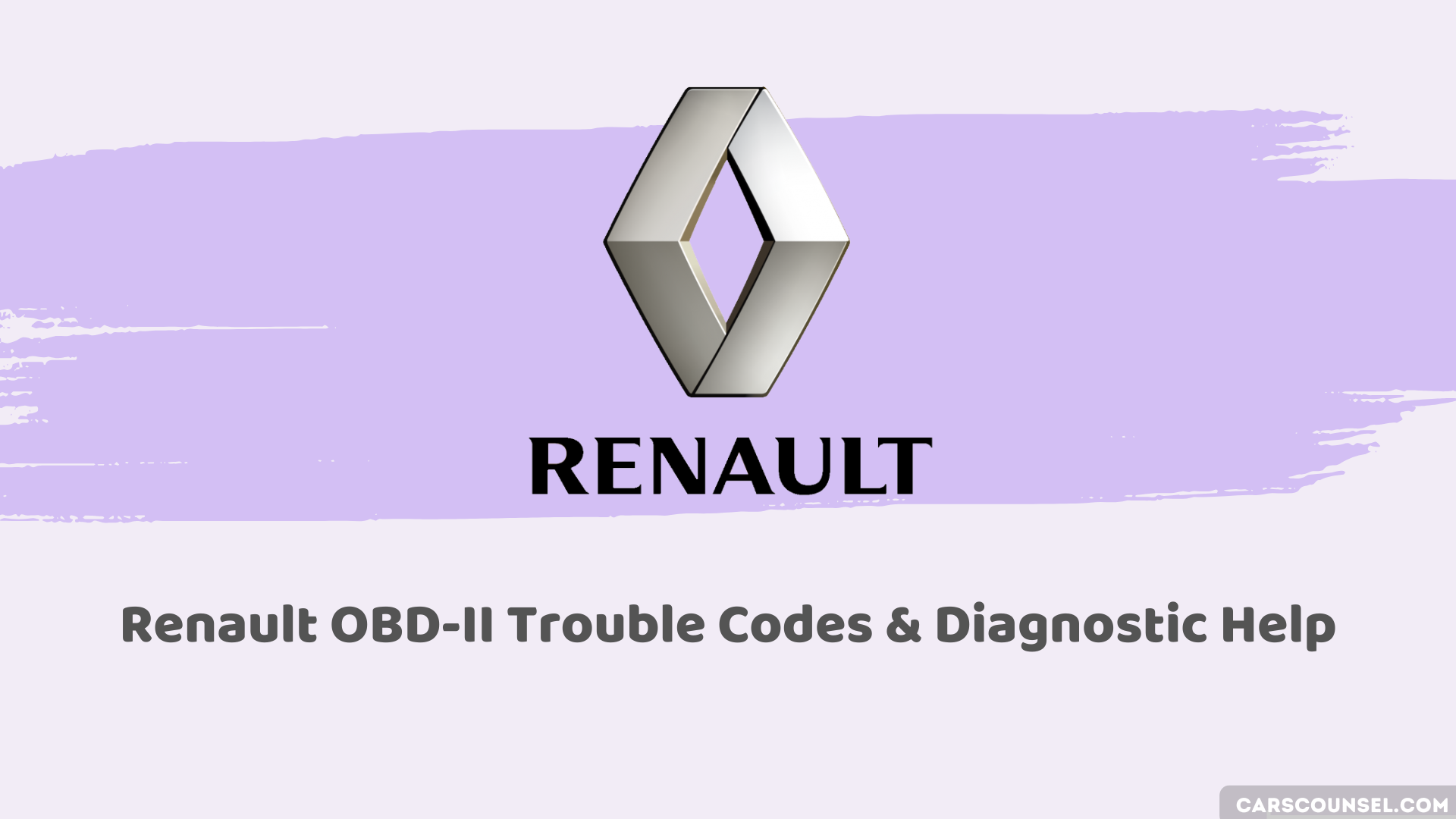You might think that decoding your Renault’s “check engine” light is a challenging task, but it’s actually more accessible than you think. With the Renault OBD/OBD2 Code Library, you’ll have a comprehensive guide to over 5,000 generic and manufacturer-specific codes at your fingertips. From emissions control to EVAP systems, you’ll be able to pinpoint the issue and find a solution.
But what exactly do these codes mean, and how can you use them to fix your vehicle?

Quick Navigation
Understanding Diagnostic Trouble Codes
When your vehicle’s onboard computer detects a malfunction or fault in the engine, transmission, or other systems, it generates alphanumeric codes known as Diagnostic Trouble Codes (DTCs).
These codes are unique to your vehicle’s make and model, providing a starting point for diagnosis, not a definitive solution. You’ll notice that DTCs have a prefix, with P0 codes being generic and P1 codes being Manufacturer Specific.
A reliable OBD2 reader is necessary to thoroughly scan your vehicle for faults beyond traditional DTC codes. Be cautious when interpreting DTCs, as they may trigger indicator light malfunctions on the dashboard, but parts or components shouldn’t be replaced based solely on a malfunctioning indicator lamp.
Consult your vehicle service manual to determine possible causes of the fault and required testing.
Renault OBD2 Code Library
As you explore into the world of OBD2 codes, having access to a comprehensive database specific to your vehicle’s make is vital.
The Renault OBD2 Code Library provides exactly that, offering a vast repository of over 5,000 generic and manufacturer-specific OBD2 codes, including those related to auxiliary emissions control, EGR, EVAP, and other systems.
Each code is accompanied by a detailed description, cause, and solution, enabling you to identify and fix problems efficiently.
You can search the library by entering your vehicle’s make and diagnostic trouble code to retrieve relevant information and fix advice.
With regular updates to reflect new Renault models and systems, you’ll always have access to the most current and accurate information to diagnose and repair your vehicle.
Common Renault Diagnostic Codes
Since Renault vehicles are prone to specific issues, being familiar with common diagnostic codes can help you identify and address problems more efficiently.
This knowledge allows you to diagnose trouble codes and obtain specific information about the issue at hand.
Here are some common Renault diagnostic codes to watch out for:
- P0120: Throttle/Pedal Position Sensor/Switch A Circuit Malfunction
- P0171: System Too Lean (Bank 1)
- P0420: Catalyst System Efficiency Below Threshold (Bank 1)
- U0100: Lost Communication with ECM/PCM “A”
Most Common Renault OBD-II Trouble Codes
| Code | Description |
|---|---|
| P0001 | Fuel Volume Regulator Control Circuit/Open |
| P0002 | Fuel Volume Regulator Control Circuit Range/Performance |
| P0162 | O2 Sensor Circuit Malfunction (Bank 2 Sensor 2) |
| P0163 | O2 Sensor Circuit Malfunction (Bank 2 Sensor 3) |
| P0170 | Fuel Trim Malfunction (Bank 1) |
| P0171 | System Too Lean (Bank 1) |
| P0172 | System Too Rich (Bank 1) |
| P0216 | Injection Timing Control Circuit Malfunction |
| P0217 | Engine Overtemp Condition |
| P0218 | Transmission Over Temperature Condition |
| P0219 | Engine Over Speed Condition |
| P0220 | Throttle/Pedal Position Sensor/Switch B Circuit Malfunction |
| P0221 | Throttle/Pedal Position Sensor/Switch B Circuit Range/Performance Problem |
| P0222 | Throttle/Pedal Position Sensor/Switch B Circuit Low Input |
| P0223 | Throttle/Pedal Position Sensor/Switch B Circuit High Input |

